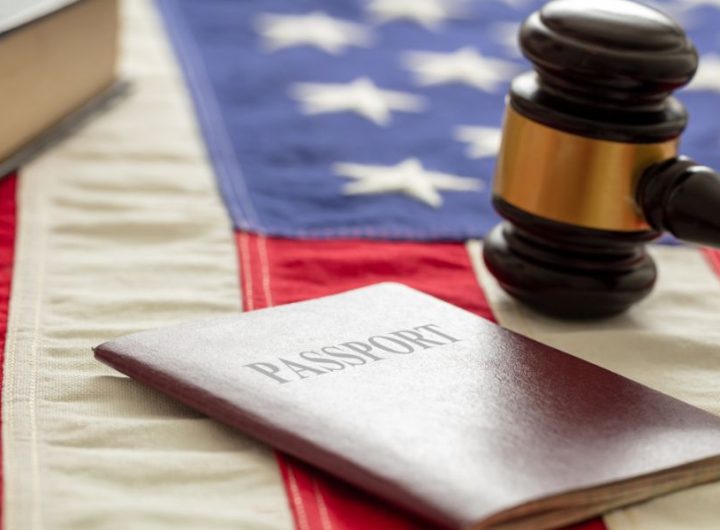
Diverse three people, medical workers man and women talking in covid vaccination center.
Across New York, headlines and inspection reports have spotlighted a hard truth: when nursing competency slips, patients get hurt. Nursing Competency Concerns and Legal Accountability in New York isn’t an abstract policy debate: it’s about medication errors, missed assessments, preventable infections, and families left searching for answers. This article looks at how those failures surface, why they cause harm, and how New York law addresses accountability, from hospitals that hire or retain unqualified staff to the legal rights of families after a preventable death.
Recent cases exposing gaps in nursing competency standards
Recent investigations in New York and across the nation have revealed recurring concerns: rushed training for float or travel nurses, inadequate onboarding for complex units, and documentation that obscures rather than clarifies what occurred at the bedside. After the pandemic staffing crisis, some facilities relied heavily on temporary labor with uneven competencies, particularly in ICUs, emergency departments, and long-term care settings.
When sentinel events cluster — unexpected deaths, wrong-dose medication errors, unrecognized sepsis — it’s rarely a single rogue act. It reflects a broader Nurse Competency Questioned pattern: insufficient skills assessments, fragmented handoffs, and supervision stretched too thin. In several hospital reviews, nurses were assigned to high-acuity patients before proving proficiency with critical devices such as infusion pumps, ventilators, or high-alert medications.
The takeaway from these cases is not merely to assign blame to individuals, but to examine whether systems for hiring, credentialing, orientation, preceptorship, and ongoing competency validation are genuine safeguards or merely procedural checkboxes.
How negligence leads to patient harm in healthcare facilities
In New York medical malpractice law, negligence means a deviation from accepted standards of care that causes injury. For nursing, that standard is what a reasonably prudent nurse would do under similar circumstances. Four elements must be proven: duty, breach, causation, and damages.
How do breaches actually unfold at the bedside?
- Assessment lapses: Failure to monitor vitals after surgery, missing early sepsis clues, or not escalating when deterioration appears.
- Medication errors: Wrong patient, wrong dose, pump misprogramming, or bypassing barcode scanning in a rush.
- Communication breakpoints: Incomplete handoffs, ignored early warning scores, or delayed calls to physicians.
- Documentation gaps: Charting after the fact that masks timing, undermining continuity and risk detection.
- Environment and staffing: Unsafe ratios and inadequate supervision of novices or agency staff.
These failures cause harm in predictable ways, respiratory arrests that weren’t recognized, strokes missed during neuro checks, bedsores turning to systemic infections, elopements leading to fatal exposure. The causation link is built from records, witness accounts, audit trails, and expert analysis showing that timely, competent nursing care would likely have prevented the injury.
Legal accountability for hospitals employing unqualified staff
Hospitals in New York carry duties that go beyond any one clinician’s conduct. They can be liable under several theories when unqualified or unsupervised staff harm patients:
- Negligent hiring, credentialing, and retention: Failing to verify licenses, competencies, or past performance: keeping a nurse even though red flags: or assigning staff to units without proven skills for that setting.
- Negligent training and supervision: Inadequate orientation, lack of preceptorship, or unsafe floating without mentorship.
- Corporate negligence: System-level failures, such as missing policies for high-alert medications, broken escalation pathways, or ignoring repeated incident warnings.
- Vicarious liability (respondeat superior): Because nurses are typically hospital employees, the hospital is generally responsible for their on-the-job negligence.
In practice, plaintiffs’ counsel often obtains staffing plans, training records, competency assessments, incident reports, and EHR audit logs to show what the hospital knew or should have known. If leadership assigned a novice to a ventilated patient without required competencies, or cut staffing below the hospital’s own plan, juries may view that as preventable and systemic.
For independent contractor physicians the rules can differ, but for nursing staff the chain of accountability often runs straight to the hospital. Apparent agency arguments also arise when patients reasonably believe all caregivers were hospital agents, especially in emergency departments.
Family rights when preventable deaths occur in medical settings
New York recognizes two related claims after a preventable death:
- Wrongful death: Brought by the personal representative of the estate for the benefit of distributees, focused on pecuniary losses (such as financial support, household services), plus funeral expenses. New York historically has limited recovery for grief or emotional loss in wrongful death, though legislative reforms are debated periodically.
- Survival action: Seeks damages the decedent could have claimed if they had lived, including conscious pain and suffering and medical expenses.
Timing is crucial. The statute of limitations for medical malpractice is generally 2 years and 6 months from the negligent act or from the end of continuous treatment for the same condition. Wrongful death actions are typically two years from the date of death. For public hospitals and municipal facilities, shorter deadlines and a notice-of-claim requirement apply, often a 90-day notice and a significantly shorter window (around one year and 90 days) to file suit. Exceptions exist, such as the foreign-object discovery rule.
Families also have the right to request records, including the complete electronic medical record with audit trails. In parallel, they may seek agency investigations through the New York State Department of Health (DOH). While regulatory findings don’t decide a civil case, they can corroborate that standards were breached. Prompt legal consultation helps preserve evidence and meet deadlines.
Role of state oversight in strengthening nursing practices
Several New York entities police quality and competency:
- New York State Department of Health: Surveys hospitals and nursing homes, investigates reportable events through NYPORTS (the Patient Occurrence Reporting and Tracking System), and can impose corrective plans and penalties.
- New York State Education Department, Office of the Professions and the State Board for Nursing: License, discipline, and set professional standards for nurses.
- Federal oversight: CMS Conditions of Participation and accrediting bodies (e.g., The Joint Commission) drive root-cause analyses and safety improvements.
Recent New York staffing initiatives require hospitals to maintain and follow unit-level staffing plans and publicly report compliance, while nursing homes must meet minimum staffing thresholds. Enforcement isn’t just paperwork: the DOH can cite facilities, demand corrective action, and refer egregious cases to the Attorney General’s Medicaid Fraud Control Unit when appropriate.
The goal is not punishment for its own sake, but ensuring systems that validate competencies, support safe staffing, and make it easy, not hard, for nurses to do the right thing.
Attorney advocacy for victims of medical negligence
Serious nursing failures are complex to prove. Experienced attorneys assemble a factual mosaic: securing EHRs with audit logs, preserving bedside monitor data, obtaining policy manuals, and working with nurse and physician experts to map how the standard of care was breached. They also explore hospital-level liability, credentialing gaps, unsafe staffing deviations, and training shortfalls.
In New York, firms with deep medical malpractice experience, such as the Jacob Fuchsberg Law Firm, often handle cases where nursing competency stands at the center of the harm. Effective advocacy includes early investigation, filing timely notices for public facilities, coordinating with DOH inquiries, and preparing families for the realities of litigation timelines. The outcome can finance ongoing care for survivors, or bring long-sought accountability after a wrongful death.


 Uncovering the Realms of Property Division During a Divorce Case
Uncovering the Realms of Property Division During a Divorce Case  Estate Planning After Divorce: Protecting Your Financial Future in Boston
Estate Planning After Divorce: Protecting Your Financial Future in Boston  The Role of Evidence in Winning a Car Accident Claim in Atlanta
The Role of Evidence in Winning a Car Accident Claim in Atlanta  Exploring the EB-5 Investor Visa Program and Immigration Pathways in 2025
Exploring the EB-5 Investor Visa Program and Immigration Pathways in 2025  Workers’ Compensation Rights and Employee Protections in Washington State
Workers’ Compensation Rights and Employee Protections in Washington State  Smart Strategies a Harlem Personal Injury Lawyer Uses to Maximize Car Accident Settlements
Smart Strategies a Harlem Personal Injury Lawyer Uses to Maximize Car Accident Settlements